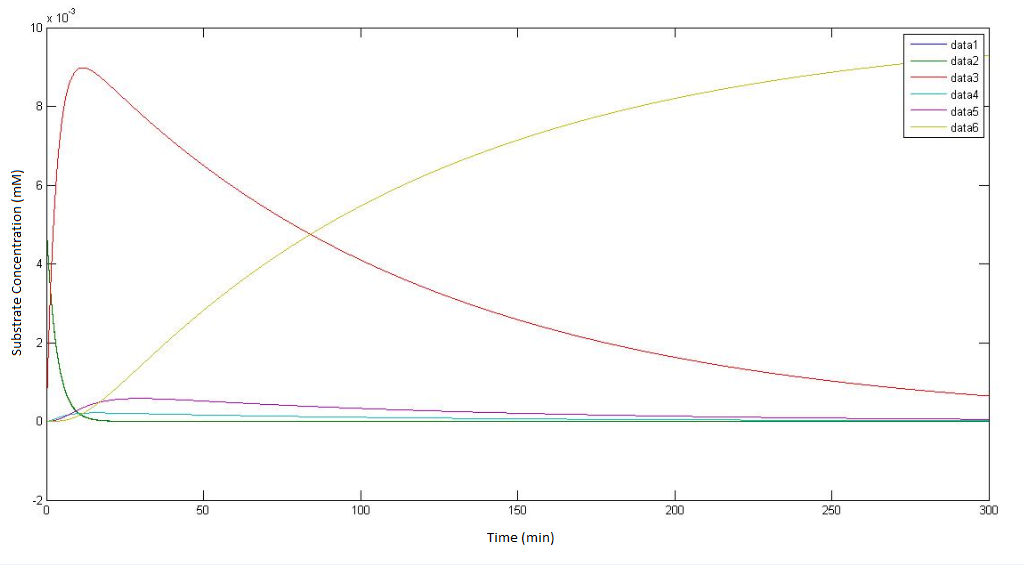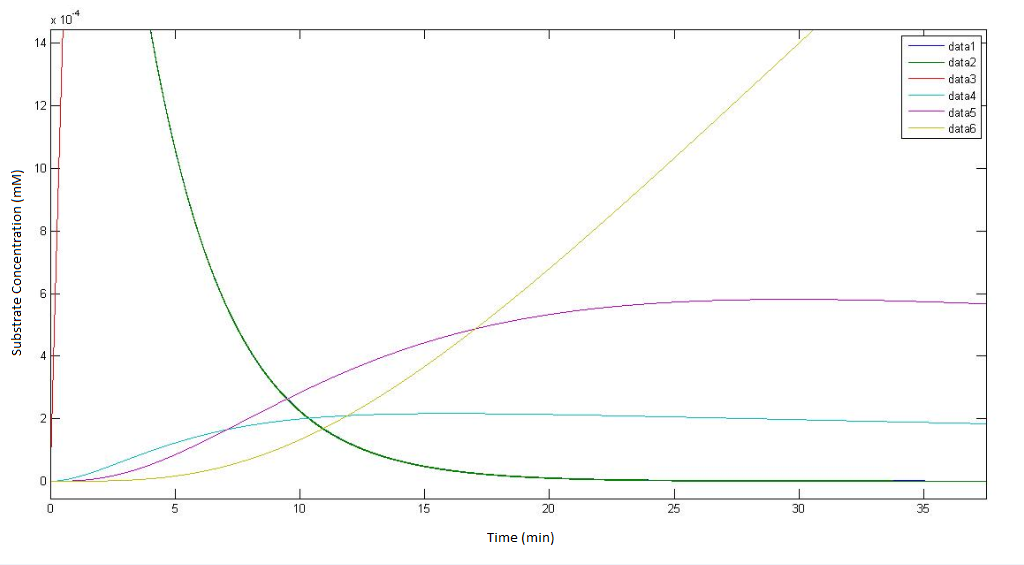Team:SydneyUni Australia/Modelling Results
From 2013.igem.org
(Difference between revisions)
Jbergfield (Talk | contribs) |
(Resized graphs) |
||
| Line 46: | Line 46: | ||
===='''Output:'''==== | ===='''Output:'''==== | ||
| - | [[File:Igem regraph_1.jpg| | + | [[File:Igem regraph_1.jpg|950px]] |
| - | [[File:Igem regraph_2.jpg| | + | [[File:Igem regraph_2.jpg|950px]] |
{{Team:SydneyUni_Australia/Footer}} | {{Team:SydneyUni_Australia/Footer}} | ||
Revision as of 03:20, 28 September 2013


Running the Model
The model was run using MATLAB’s ODE45.
All enzyme concentrations were given a value of 0.1 mM. The temperature was set as T=298K. A plasma membrane distance of d=2nm was given. The cell concentration was given as 1E8 cells/mL. No cellular growth rate was implemented. Glycolate, ε, was left ‘unprocessed’, i.e. it is left to simply accumulate.
Using the constants above the flux took the value:
Assumptions
- All enzymes follow MM kinetics as described in the literature.
- The enzymes and metabolites are homogeneously distributed within the cell.
- The metabolites in the pathway are processed only by the proposed enzymes.
- The enzyme concentrations remain constant.
- The partition coefficient for DCA in octanol and water is approximately the same as the partition coefficient for the cell membrane.
- The cells only grow/divide through DCA-derived-glycolate.
- Diffusion can accurately follow
- All cells are of the same size (ie equal membrane surface area)
Raw MATLAB code:
function dy = DCA(t,y) dy=zeros(6,1); dy(1)= -6*(10^4)*0.0463067*(y(1)-y(2)); dy(2)= 6*(10^4)*0.0463067*(y(1)-y(2))-3.3*0.1*(y(2)/(0.53+y(2))); dy(3)= 3.3*0.1*(y(2)/(0.53+y(2)))-0.0871*0.1*(y(3)/(0.94+y(3))); dy(4)= .0871*0.1*(y(3)/(0.94+y(3)))- 0.6*0.1*(y(4)/(0.16+y(4))); dy(5)= 0.6*0.1*(y(4)/(0.16+y(4))) - 25.4*0.1*(y(5)/(20+y(5))); dy(6)= 25.4*0.1*(y(5)/(20+y(5))); end
Output:
 "
"




